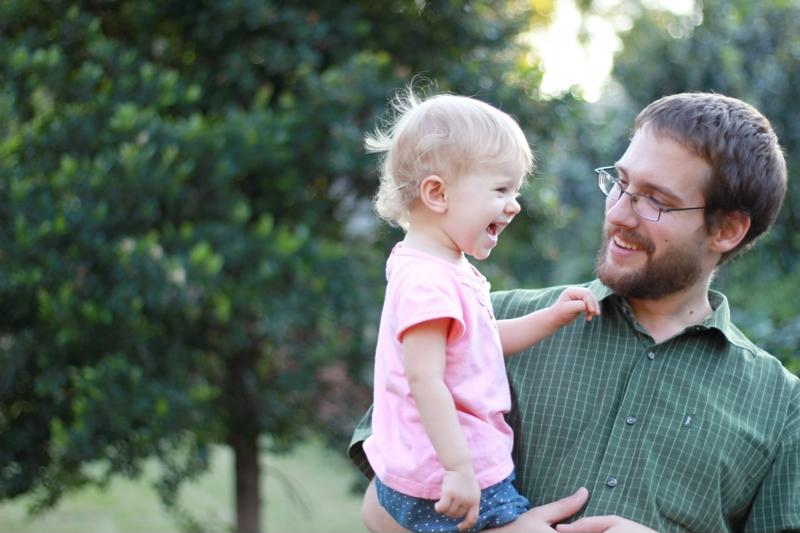Your toddler is growing and learning every day. Understanding the milestones most babies reach will help you gauge her development, but keep in mind that every child is different and may learn new skills at varying intervals. That said, if your baby seems a little behind, reaching out to her pediatrician may be a good idea.
Here are some of the toddler milestones your child will likely reach between ages one and three:
One-year-old milestones
By age one, your baby will understand some of the things you tell him, and he’ll want to say things back. But speaking is a hard thing to learn, so he’ll communicate through pointing, crying and simple gestures. For example, when he wants you to read him a story, he’ll probably hand you a book, the Centers for Disease Control and Prevention explained. Or, when he doesn’t want to eat his carrots, he’ll shake his head “no.” You might even catch him trying to sound out some of the words you say.
Your little guy will also be ready to move, and you may find him pulling himself up to stand or using furniture to keep his balance while he toddles along. He should also be able to get into a seated position without help.
18-month-old milestones
The six months after your baby’s first birthday will be filled with growth and development. By 18 months old, your child will be very curious about the world around her. She’ll quickly move between positions (which means she may start climbing your furniture and shelves to get to her toys). She’ll also squat to pick something up, according to Parenting. As she becomes more coordinated, she’ll be able to turn her head while standing without falling down and will use her hands to pick up items, change positions and clap when she’s happy.

For the most part, 18-month-olds are happy people: excited about social play, comforted by cuddles from mom or dad, and intrigued by new toys and environments. However, certain situations might bother your 18-month-old: Shy toddlers might be afraid of strangers or cling to a familiar person when in a new situation. She might throw temper tantrums (and you’ll have plenty more over the next year or so), but she should also be able to self-soothe when upset.
At this age, you may want to arrange for a doctor’s appointment if your toddler can’t:
- Walk, or only tip-toes when she walks.
- Form two-word sentences.
- Push a toy with wheels.
- Imitate actions or words.
- Speak at least 15 words.
Two-year-old milestones
Your two-year-old will begin to understand himself to be separate from other people and will become increasingly more independent. He should also be able to follow simple instructions from you, like when you ask him to pick up his toys and put them in the toy box. But he’ll also start to show defiant behavior by doing something after you said not to (even though you know he understood you).
He’ll also be getting smarter: He might be able to sort toys or other objects by shape or color (though correctly naming many colors may not come until age 3). When you hide his favorite toy underneath a few covers, he’ll be able to find it. He’ll also start playing make believe at this age, according to the American Academy of Pediatrics.
At around age two, toddlers begin getting a feel for drawing and writing. He might pick up crayons and scribble (ideally in a coloring book and not on your wall), and he’ll be able to draw shapes like lines and circles.
Three-year-old milestones
Three-year-olds will have good emotional intelligence; if her friend starts crying, she’ll show sympathy. When she sees a friend, she’ll show affection or greet her without being told to do so. She’ll also understand the concept of taking turns in games.
Your three-year-old will become quite the little artist, able to draw people with two to four body parts, as well as squares and some capital letters, according to AAP.
You may be impressed with your three-year-old’s coordination: She’ll walk up and down stairs unassisted, with one foot on one step and the other on the next. She’ll use toys that have levers, buttons and other moving parts, and she’ll be able to unscrew jar lids.
Her language will get much better, and she’ll be able to speak clearly enough for strangers to understand. She’ll get basic concepts of grammar, and her sentences may have as many as six words. She’ll also be able to repeat parts of stories and finish familiar sentences from her favorite books. The concepts of “mine” and “his” will be clear to her, as well as “same” and “different.”
By this age, some developmental concerns include not being able to:
- Jump in place.
- Ride a tricycle.
- Stack at least four blocks.
- Respond to people who aren’t family members.
- Understand the difference between “me” and “you.”
- Hold a crayon or scribble.
